

Prohibition. 1920's Prohibition. During Prohibition, the manufacture, transportation, import, export, and sale of alcoholic beverages were restricted or illegal.
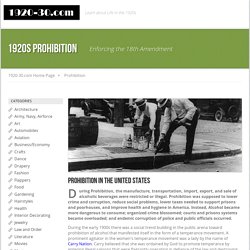
Prohibition was supposed to lower crime and corruption, reduce social problems, lower taxes needed to support prisons and poorhouses, and improve health and hygiene in America. Instead, Alcohol became more dangerous to consume; organized crime blossomed; courts and prisons systems became overloaded; and endemic corruption of police and public officials occurred. During the early 1900s there was a social trend building in the public arena toward prohibition of alcohol that manifested itself in the form of a temperance movement. A prominent agitator in the women's temperance movement was a lady by the name of Carry Nation. Carry believed that she was ordained by God to promote temperance by entering illegal saloons that were flagrantly operating in defiance of the law and destroying their bars and stock.
Prohibition Posters 1920's PROHIBITION RESOURCES. Prohibition: Home. American Economics in the 1920s and 1930s. By Rit Nosotro Change Over Time essay Describe USA economic cause and effect from the "Roaring Twenties" to the "Great Depression" and the "New Deal".

Thesis: Summary: Few periods in American history have influenced our current government structure, size, and economy more than the “Roaring Twenties” and the “Great Depression”. World War I exhausted people. The Great Depression most drastically effected national moral by eliminating jobs. After taking office in 1933, President Franklin Delano Roosevelt sought to bring change to the nation by increasing the role and power of the government in ways Hoover hadn’t.
Ultimately, it was not the New Deal that ended the Depression but our entry into World War II. QuickQuiz: 1. A) 1928 b) 1929 c) 1930 d) 1931 2. A) 1930 b) 1929 c) 1934 d) 1933 3. A) Franklin Delano Roosevelt b) Hebert Hoover c) Calvin Coolidge d) George Bush 4. A) 20 b) 50 c) 30 d) 15 Bibliography: Holcombe, Randall G.
MSN Encarta Research and Learning Simkins, Scott copyright 1997. EVENTS OF THE 1920s. EVENTS OF THE 1920s Most historians agree that the stock market crash of October 1929 did not "cause" the Great Depression.
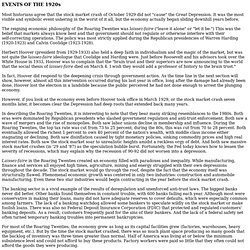
It was the most visible and symbolic event ushering in the worst of it all, but the economy actually began sliding downhill years before. The reigning economic philosophy of the Roaring Twenties was laissez-faire ("leave it alone" or "let it be. ") This was the belief that markets always know best and that government should not regulate or otherwise interfere with their self-correcting operations. The Roaring Twenties: A New Society: Economic & Social Change - CliffsNotes. Spark Notes: The Great Depression (1920–1940): The Roaring Twenties and the Jazz Age: 1920–1929. Music, art and culture of the 1920's. "The Roaring Twenties" - "The 1920's" As of July 1, 2013 ThinkQuest has been discontinued.
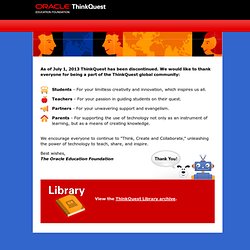
We would like to thank everyone for being a part of the ThinkQuest global community: Students - For your limitless creativity and innovation, which inspires us all. Teachers - For your passion in guiding students on their quest. Partners - For your unwavering support and evangelism. Parents - For supporting the use of technology not only as an instrument of learning, but as a means of creating knowledge.
We encourage everyone to continue to “Think, Create and Collaborate,” unleashing the power of technology to teach, share, and inspire. The Roaring Twenties — History.com Articles, Video, Pictures and Facts. Prohibition was not the only source of social tension during the 1920s.
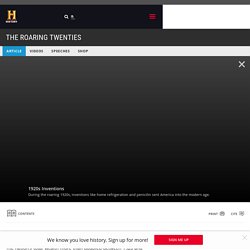
The Great Migration of African Americans from the Southern countryside to Northern cities and the increasing visibility of black culture—jazz and blues music, for example, and the literary movement known as the Harlem Renaissance—discomfited some white Americans. Millions of people in places like Indiana and Illinois joined the Ku Klux Klan in the 1920s. To them, the Klan represented a return to all the “values” that the fast-paced, city-slicker Roaring Twenties were trampling. Likewise, an anti-Communist “Red Scare” in 1919 and 1920 encouraged a widespread nativist, or anti-immigrant, hysteria.
This led to the passage of an extremely restrictive immigration law, the National Origins Act of 1924, which set immigration quotas that excluded some people (Eastern Europeans and Asians) in favor of others (Northern Europeans and people from Great Britain, for example). Roaring Twenties. The 1920s era went by such names as the Jazz Age, the Age of Intolerance, and the Age of Wonderful Nonsense.

Under any moniker, the era embodied the beginning of modern America. Numerous Americans felt buoyed up following World War I (1914-1918). America had survived a deadly worldwide influenza epidemic (1918). "The Roaring Twenties" As of July 1, 2013 ThinkQuest has been discontinued.
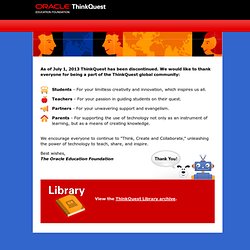
We would like to thank everyone for being a part of the ThinkQuest global community: Students - For your limitless creativity and innovation, which inspires us all. Teachers - For your passion in guiding students on their quest. Partners - For your unwavering support and evangelism. Parents - For supporting the use of technology not only as an instrument of learning, but as a means of creating knowledge. We encourage everyone to continue to “Think, Create and Collaborate,” unleashing the power of technology to teach, share, and inspire. The Roaring Twenties 20s Lesson Plans History American Government High School - USHistorySite.com.